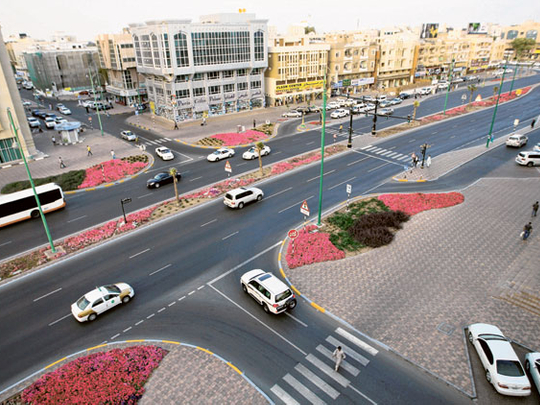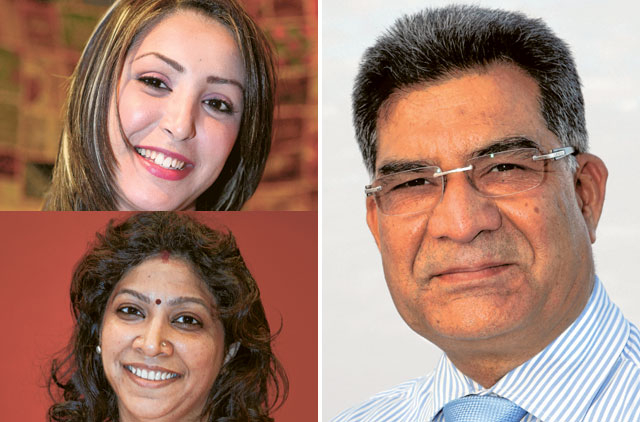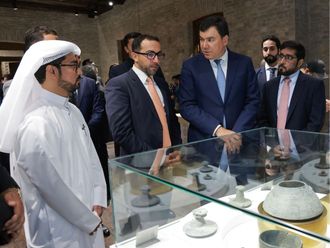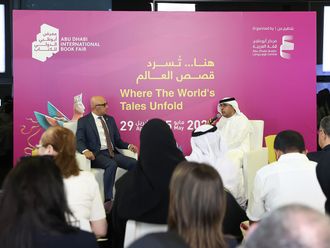
Living in a crowded downtown area can be strenuous, but it is a necessity for Iqtedar Ali, who wanted to live within walking distance of restaurants, shopping centres and, of course, from his office.
He lives in a part of a divided penthouse on the fifth floor of a clumsy building, paying a hefty rent with which he could get a nice villa in the suburbs.
"I am now used to the crowded streets, non-stop noise, and frequent traffic jams. But it all goes away once I enter my home and the door is shut," he said.
Ali, a Pakistani expatriate, thinks most other residents of the area feel the same way as he does.
"They also want to be within walking distance of the downtown area and what it offers," he said.
The downtown community is also a friendly one, Ali said, and people frequently wave at each other in acknowledgement in markets, parks and restaurants.
Al Ain downtown, which is officially called the Central District, is unique for its usefulness and attractions. Almost everything is close by.
"The downtown area used to be the city of Al Ain. The city has now expanded enormously on three sides," said Ali. The fourth side of the city is blocked by the UAE-Oman border.
The district has seen new and rapid development over the past five years, which has changed its entire complexion and ushered in a modern area.
"Some recent developments have breathed new life into the Central District," said Bela Suri, an Indian businesswoman and long-time resident of the city.
Ultra-modern downtown
When she first arrived, the district was the only market area in an ordinary city in the Arabian desert. "It has become an ultra-modern downtown area of a cosmopolitan city now, that is internationally known for its tourism, culture, and heritage," she said.
The civic administration has removed a huge bridge from the city's Main Street (Shaikh Zayed-I Street). A number of roundabouts have also been replaced with signal-controlled intersections. Flowers and ornamental plants have been planted in numerous green patches along the road.
The developments have had at least a two-fold effect on the Central District. It is now a beautiful and, more importantly, a pedestrian-friendly area. It was earlier a nightmare for pedestrians to cross a street, but they now have dozens of zebra crossings and pavements to roam around.
Traders, who suffered during the redesigning and reconstruction of the area, are now happy. "A pedestrian-friendly environment is helping us to draw more customers during these tough economic times," said Suri.
The businesswoman runs a restaurant in the downtown area — the Al Bukhara Restaurant. A typical Indian eatery, it is located inside the Town Square, a shopping complex with a huge play area for children and a musical fountain. It has been built on what used to be the city's main taxi stand.
"I believe the musical fountain was the first of its kind in the country when it was installed some seven years ago," Suri said.
Many people come at night to see the colourful fountain. "It's a fine relaxing area with lots of restaurants on the square's northern edge," Suri added. These restaurants offer Arabic, Indian, Continental, and Chinese food.
"I love this area, though I do not live here," said Suri. "There are so many attractions for tourists and residents alike."
Museum
The Zayed National Museum is a prime attraction for tourists. It is a very rich and old museum that offers a deep insight into the city's ancient settlers, their culture, art, and lifestyles.
The city's oldest date palm oasis is located just behind the museum and stretches out to a neighbouring district. The oasis has thousands of date palms growing on an ancient irrigation system called Aflaj — a network of underground waterways. Inside the oasis, which is one of seven in the city, an intricate network of narrow streets has made it a maze.
Fadwa Azkari, a Moroccan expatriate, said she always enjoys visiting the oasis. "People usually get lost inside there for sometime, but it is not dangerous as police always patrol the area," she said. The oasis has eight entrances, some with arched gates, which close just before sunset.
The authorities have protected and developed the oasis keeping tourism in view. It highlights the country's Bedouin culture and traditions. Many old style houses, mainly used as stores and accommodations for farm workers, mosques, restaurants, rest points, and narrow intricate alleyways are its features.
Azkari said the Main and Shaikh Khalifa Streets are the heart of the downtown area. These streets are always crowded. People from the neighbouring Omani city of Buraimi are also frequent visitors and enjoy the shopping and the varieties of food such as traditional Arabian and the ubiquitous modern fast foods such as pizzas and burgers, served by the equally ubiquitous multinational joints such as Pizza Hut, KFC, McDonalds, and Hardee's.
An old market area is so popular among Omani customers that it is now called the Omani market.
The other landmarks in the districts are the Clock Interchange, Globe Roundabout, Murabba Interchange, Pizza Hut Roundabout, and Al Madar Residential Complex. The Clock Interchange, located on the western edge of the district, has one of the world's largest Swiss-made clocks.
Azkari said the downtown area is full of people and humming with activity soon after sunset. People from all around the city come here to shop, roam around and unwind. Traffic also increases at this time, but on weekends the area is a nightmare for motorists.
Diversity
Naresh Kumar, an Indian community leader, said the district has a rich diversity of offerings and unique stories to tell. "It's full of wonderful surprises that make it a most desirable place," he said.
The district is no doubt the commercial hub of the city, but it has many parks and gardens, too, to support family life. People living in residential buildings also enjoy their life in the downtown area and have the luxury of living close to all major civic facilities.
Most residents of the area are expatriates from India, Pakistan, and various Arab countries.
"I have spent more than two decades in the downtown area and found not even a single resident complaining about it," said Kumar. The city authorities are involved in an extensive maintenance process to ensure the downtown area always remains a beautiful central spot of the city, and the cultural jewel of the UAE.
"Unlike other cities, the life in downtown Al Ain is fun," said Kumar. "People actually fall in love with it."
TOP PICKS
- Restaurants: a number of small and big restaurants and bakeries like Bukhara Restaurant, Al Ghazal Restaurant, Fadal Restaurants, Sahari Restaurant, Golden Sheep Restaurant, Ta'awan Restaurant are open along the roads. Shaikh Khalifa Street is known for its line of international fast food outlets.
- Hospitals: The downtown area has a big medical facility, Al Noor Hospital, along with many clinics and laboratories.
- Shopping Malls: There is no big shopping mall inside the downtown area but medium sized shopping centres such as Al Falah Plaza, City Plaza, Safeer Centre, Al Ain Co-operative Society, are located here. Al Ain Mall, the primary shopping destination in the city area, is located in the neighbouring district. The most crowded market areas are the Central Market that is popularly known as Pathan Market. The city's central fruit and vegetable market was also located here but it has been now moved out of the area.
- Hotels: The Central District has no five- or four-star hotel but a few small hotels and apartment housing complexes are located here. Al Ain Rotana Hotel is on the western edge of the district.
- Grocery stores: Small groceries are present behind many of the residential buildings along the streets.
Have your say
Do you live in the Al Ain area and have a story to tell us? What is your opinion of the changes that took place in your area? Do you live in another neighbourhood and would like to tell us about it? Write to us.















